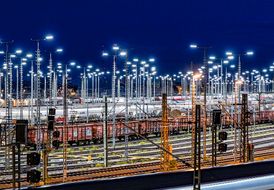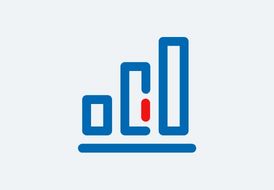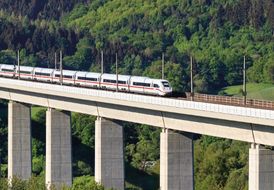Overview of greenhouse gas footprint
ABSOLUTE CO₂e EMISSIONS BY JOURNEYS, TRANSPORTS AND STATIONARY FACILITIES / million t | 2021 | 2020 | 2019 | |
| Regional rail passenger transport | 1.99 | 2.06 | 2.66 | |
thereof in Germany | 1.59 | 1.62 | 1,98 | |
| Long-distance rail passenger transport | 0.04 | 0.04 | 0.04 | |
Bus transport | 1.58 | 1.50 | 1.78 | |
thereof in Germany | 0.53 | 0.51 | 0.57 | |
Rail freight transport 1) | 1.70 | 1.38 | 1.70 | |
Road freight transport 2) | 3.15 | 2.07 | 3.98 | |
Air freight 3) | 7.07 | 5.45 | 6.07 | |
Ocean freight 3) | 1.56 | 1.92 | 2.27 | |
Other transport 4) | 0.11 | 0.11 | 0.11 | |
Stationary facilities | 1.32 | 1.46 | 1.38 | |
Total | 18.52 | 15.99 | 19.99 | |
Well-to-wheel (WTW), scope 1–3. We calculate greenhouse gas emissions using the financial control approach as per the Greenhouse Gas Protocol.
1) Excluding DB Cargo and DB Schenker rail freight transport from/to China up to and including 2020.
2) Excluding pre-carriage and onward carriage from land, air and ocean freight up to and including 2020.
3) Excluding pre-carriage and onward carriage in 2021.
4) Including among others DB Connect, internal traffic.
| ABSOLUTE CO₂e-EMISSIONS TO SCOPE 1–3 / % | 2021 | 2020 | 2019 | |
Share of Scope 1 | 17.8 | 19.0 | 18.9 | |
Share of Scope 2 | 17.2 | 21.3 | 19.7 | |
Share of Scope 3 | 65.0 | 59.7 | 61.4 | |
Excluding DB Cargo and DB Schenker rail freight transport from/to China up to and including 2020.
Upstream fuel- and energy-related emissions (scope 3.3 as per the GHG Protocol) are reported in scope 1 and 2.
Our greenhouse gas footprint shows the amount of greenhouse gases that we emitted in one calendar year. It is made up of:
- our greenhouse gas emissions from the entirety of the rail and road fleet owned by DB Group, stationary facilities such as stations or workshops (scope 1+2) and
- emissions from transport services and journeys commissioned by DB Group (scope 3).
The specific greenhouse gas emissions and our climate protection target are calculated on the basis of absolute greenhouse gas emissions within the limits set. They also act as a benchmark for our efficiency improvement measures and provide a basis for us to compare our performance with other companies. Our absolute greenhouse gas emissions rose again in 2021, particularly in global logistics, but are still significantly below pre-Covid-19 levels.
- The scope 2 emissions of 3.19 million tons of CO₂e take into account market-based mechanisms, meaning that this figure includes all contractually regulated instruments for generating and trading electricity from renewable energies. In accordance with the scope 2 guidelines of the Greenhouse Gas Protocol on dual reporting, we also report location-based scope 2 emissions. If we take the respective national energy mixes as a basis for the reporting, the scope 2 emissions amount to 5.24 million tons of CO₂e.
- Our subcontractors’ scope 3 emissions account for the largest share of our greenhouse gas emissions (category 3.4 in the GHG Protocol). In DB Schenker’s Preferred Carrier Program, we favor working with shipping companies and airlines that have the most modern fleets and that value sustainability. Advising our customers on climatefriendly logistics is an integral part of the service portfolio of DB Schenker and DB Cargo. We also develop strategies for decarbonizing maritime and air transport, particularly in the sector platforms of the World Economic Forum (WEF).



